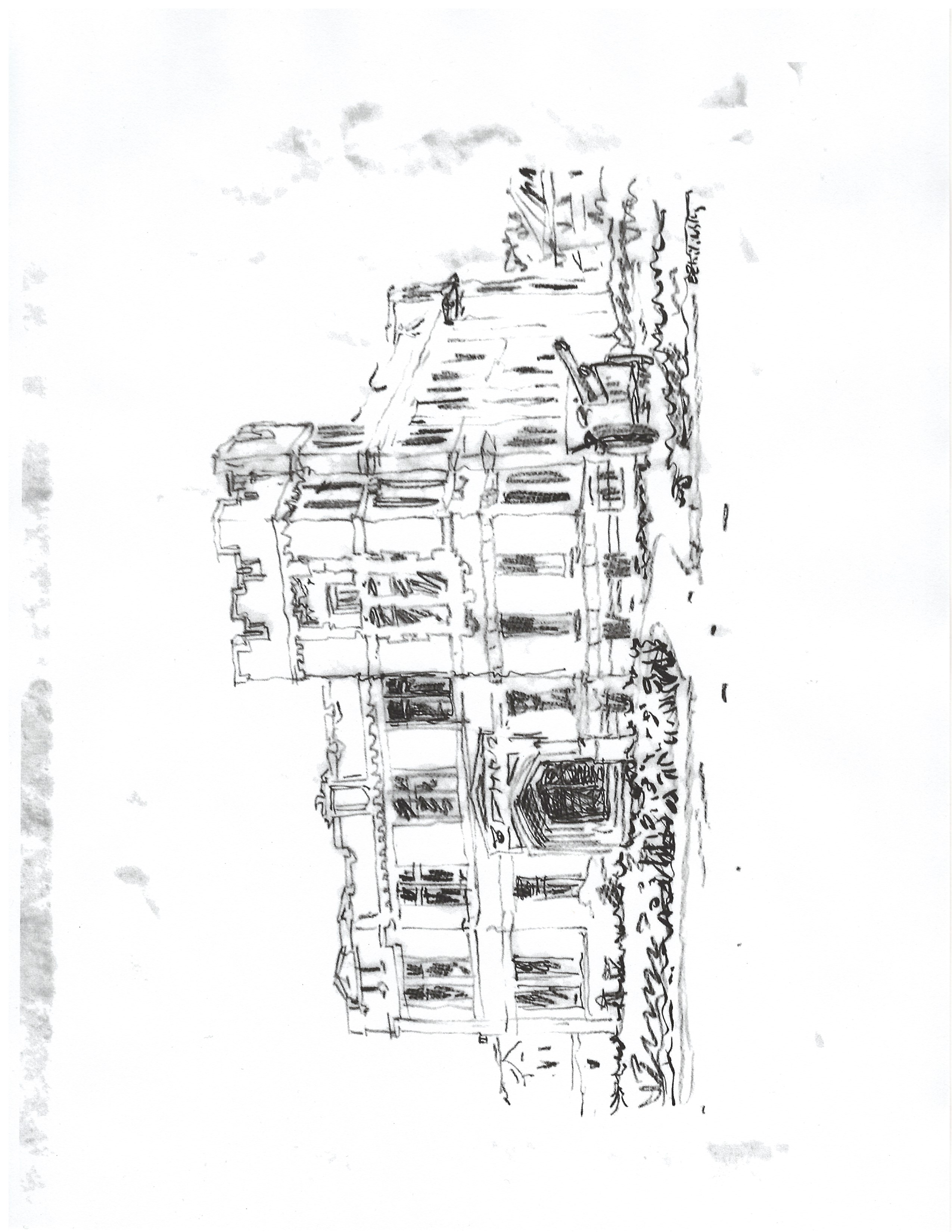Niagara Falls: The Armoury

Sketch by Eugene Zhilinsky, a member of the Niagara Society of Architects, displays the fine detail, much of which is now painted over.
Niagara Falls Armoury
5049 Victoria Avenue at South
Street, Niagara Falls, Ontario, Canada
Who was the architect? The material in the Register of Canadian Historic Places notes that the building is 'associated with' Thomas William Fuller (1865-1951), who became the Chief Architect of the Federal Ministry of Public Works in 1926. (The Fullers have had a long and fascinating involvement in Canadian architecture and construction. Thomas W. Fuller should not be confused with his father, Thomas Fuller (1823-1898), who was Chief Architect for the Department of Public Works between 1881 and 1896, and was previously a partner in Fuller, Messer & Jones - the firm that designed the original centre block of the Ottawa parliament buildings. Nor is he to be confused with his son Thomas George Fuller, sometimes referred to as 'The Pirate of the Adriatic', who was an Ottawa contractor.) However, at the time of design and construction, David Ewart (1841-1921) was the Chief Dominion Architect, and is listed as the designer in the Biography of Canadian Architects. It is often difficult to determine exactly who was the architect for older buildings, as records disappear, memories fade and, unfortunately, few buildings carry plaques naming the architect.
Armouries are features of many Canadian towns and cities and deserve some consideration, both as architecture and as representative of the times during which they were built.
The Niagara Falls Armoury was built in 1911, in an era of increasing tensions which, just three years later led to the First World War. Following Confederation, Canada was busy with domestic expansion, and lived under the protection of the British armed forces, but numbers of pressures, including from the British, Canada undertook to expand its armed forces. The orientation of these armouries was largely to train a more competent militia, so functioned as a training centre, producing soldiers who fought in the two world wars and in Korea. That an armoury was constructed in Niagara Falls is to be expected, given the proximity to the border, and in an area that was fought over during both the American Revolution and the War of 1812.
It remained in use by the military until 1999, was designated as a historical site in 1998 and is now houses the Niagara Falls Military Museum, but remains in use by the army cadets. It is now the property of the City of Niagara Falls, having bought it from the Federal Government for $2 at that time.
The Ontario armouries are worth considering for their medieval castle-derived features, although with their large windows are clearly not capable of withstanding a serious siege. The Niagara Falls building is red brick, now unfortunately painted, with stone details, including window surrounds and decorative shields. The paint hides the true delightfulness of the building, so the onlooker needs some imagination to fully understand the design. The first element of focus might be the projecting entrance, with its Tudor arch. While the facade is generally symmetrical, one of the crenelated parapets has been built up to form what might be seen as a rather short defensive tower.
The interior focussed on the drill hall, with ancillary uses including weapons storage and a rifle range in the basement. Many of the materials were from the local area, including limestone from Queenston and local brick.
Something to think about:
- Should all buildings be labelled with the date of construction and the architect's name?